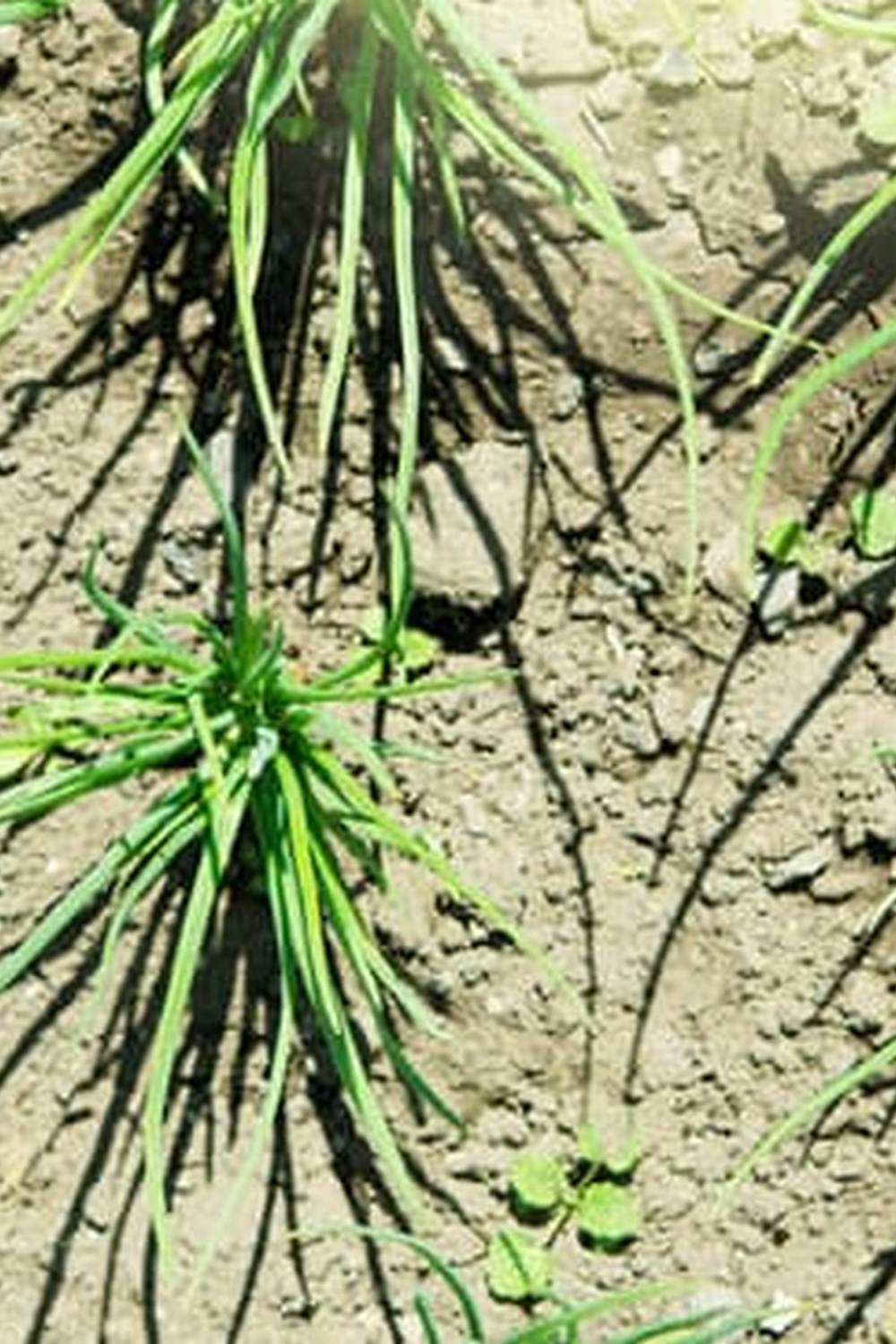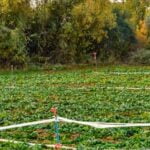Are you interested in building beautiful vegetable gardens that not only provide delicious produce but also enhance the aesthetic appeal of your outdoor space? In this article, we will explore how vegetable gardens can be both practical and visually stunning additions to your home.
From choosing the perfect location to selecting colorful and unique vegetables, we will guide you through the process of creating a garden that is as much a feast for the eyes as it is for the taste buds.
When it comes to creating a beautiful vegetable garden, the key lies in finding the ideal location that meets the needs of your plants while also adding charm to your landscape. Factors such as sunlight exposure, proper drainage, and sufficient space are crucial considerations when planning out your garden layout. By strategically placing your raised beds or square foot gardening setup, you can create a visually appealing arrangement that maximizes both form and function.
In addition to focusing on the practical aspects of gardening, such as soil preparation and plant care, we will delve into the creative side of designing a visually stunning vegetable garden. By selecting colorful varieties, incorporating edible flowers, and exploring unique shapes and textures, you can elevate your garden from a simple plot of land to a captivating outdoor sanctuary.
Join us as we explore the art of building beautiful vegetable gardens that are sure to inspire admiration from all who behold them.
Choosing the Perfect Location for Your Vegetable Garden
When it comes to building beautiful vegetable gardens, one of the key components to consider is choosing the perfect location for your garden. The success of your vegetable garden largely depends on the amount of sunlight it receives, the quality of drainage in the area, and the space available for planting.
Sunlight is crucial for photosynthesis and plant growth, so selecting a spot that receives at least 6-8 hours of direct sunlight per day is ideal. Additionally, ensuring proper drainage will prevent waterlogging and root rot, ultimately promoting healthier plants.
Considering Sunlight Exposure
Before breaking ground on your vegetable garden, take note of the sun patterns in your yard throughout the day. Observe which areas receive full sun, partial sun, or shade. Most vegetables require ample sunlight to thrive and produce a bountiful harvest. By strategically placing your garden beds in sunny spots with adequate exposure, you can maximize the growth potential of your plants and enhance the overall beauty of your vegetable garden.
Evaluating Drainage
Another essential factor to consider when selecting a location for your vegetable garden is drainage. Poorly drained soil can lead to waterlogged roots and create an environment favorable for diseases. To assess the drainage in your chosen area, observe how quickly water drains after a heavy rain or watering.
If puddles form and linger for hours, it may indicate poor drainage. Raised beds or improving soil structure with organic matter like compost can help improve drainage and create optimal growing conditions for your vegetables.
Determining Space Availability
Space considerations are also important when planning a vegetable garden as different plants have varying spacing requirements. Be sure to allow enough room between rows or individual plants to promote air circulation and prevent overcrowding, which can lead to diseases spreading easily among plants.
Consider planting taller vegetables towards the back of your garden beds to prevent shading smaller crops from essential sunlight. Planning ahead and properly spacing out your plants will not only aid in better growth but also contribute to the aesthetic appeal of your vegetable garden layout.
Designing Your Garden Layout
Another design approach to consider is square foot gardening, a method that maximizes space efficiency while minimizing the need for extensive maintenance. By dividing the garden into 1-foot squares, you can plan and plant accordingly, ensuring optimal use of the available space.
Square foot gardening is ideal for small yards or urban settings where space is limited. It also allows for easy access to plants from all sides without having to step on the soil, reducing compaction and damage to plant roots.
Companion planting is another aspect of garden layout design that can enhance both the visual appeal and productivity of your vegetable garden. This practice involves planting different types of vegetables together based on their compatibility and mutual benefits.
For example, pairing tomatoes with basil can improve tomato growth and flavor while deterring pests naturally. By strategically placing complementary plants next to each other, you can create a harmonious ecosystem within your garden that promotes healthy growth and minimizes the need for chemical interventions.
| Vegetable Garden Design Methods | Benefits |
|---|---|
| Raised Beds | Better drainage, less weeds, visually appealing |
| Square Foot Gardening | Maximizes space efficiency, minimal maintenance |
| Companion Planting | Natural pest control, improved plant growth |
Selecting the Best Vegetables for Aesthetics and Functionality
When it comes to building beautiful vegetable gardens, selecting the right vegetables is crucial in achieving both aesthetics and functionality. By choosing colorful varieties, edible flowers, and unique shapes, you can create a visually stunning garden that also provides delicious produce for your meals.
Colorful vegetables not only add visual appeal but also pack a punch in terms of nutrients. Think about including vibrant options like rainbow chard, purple cauliflower, yellow zucchini, or red cabbage in your garden. These colorful veggies not only look stunning in the garden but also provide a range of health benefits due to their different antioxidant properties.
Edible flowers are another fantastic addition to any vegetable garden. Not only do they add beauty with their bright colors and delicate petals, but they also offer a unique flavor profile to your dishes.
Flowers like nasturtiums, calendula, pansies, and borage are not only visually pleasing but can also be used in salads, desserts, or as garnishes for cocktails. By incorporating these edible blooms into your garden design, you’re adding an element of whimsy and sophistication while enhancing the overall appeal of your space.
| Colorful Varieties | Edible Flowers | Unique Shapes |
|---|---|---|
| Rainbow Chard | Nasturtiums | Romanesco Cauliflower |
| Purple Cauliflower | Calendula | Lemon Cucumber |
Preparing the Soil for Optimal Growth
When it comes to building beautiful vegetable gardens, one of the crucial steps is preparing the soil for optimal growth. By ensuring that your soil is nutrient-rich and well-conditioned, you can set your plants up for success and maximize your harvest.
Soil Testing
Before planting anything in your garden, it’s essential to conduct a soil test to determine its pH level and nutrient content. This will help you understand what amendments or fertilizers are needed to create the ideal growing environment for your vegetables. You can purchase DIY soil testing kits or send samples to a professional lab for more detailed analysis.
Composting
Compost is often called “black gold” for a reason – it enriches the soil with organic matter, improves its structure, and provides essential nutrients for plant growth. Start a compost pile or bin in your backyard by adding kitchen scraps, yard waste, and other organic materials. Once fully decomposed, you can mix the finished compost into your garden beds to promote healthy plant development.
Mulching
Mulching not only helps conserve moisture and suppress weeds but also adds organic matter to the soil as it breaks down over time. Using materials like straw, wood chips, or shredded leaves as mulch can improve soil structure, regulate temperature, and reduce erosion in your vegetable garden.
Apply a layer of mulch around plants once they are established to keep the soil healthy and thriving throughout the growing season. By taking these steps to prepare your soil effectively, you can lay a solid foundation for building a beautiful vegetable garden that yields abundant and vibrant produce.
Planting and Caring for Your Vegetable Garden
To start off your planting journey, consider creating a detailed plan for your garden layout. Utilizing raised beds can help with soil drainage and organization, while square foot gardening allows for efficient use of space. Additionally, practicing companion planting can enhance the health and growth of your vegetables by pairing plants that benefit each other.
When it comes to seed starting, proper timing is key. Some vegetables thrive when started indoors before being transplanted outdoors after the last frost has passed. Make sure to provide adequate light, warmth, and moisture during this crucial stage to ensure healthy seedlings ready for transplantation.
Watering is another essential aspect of caring for your vegetable garden. Different vegetables have varying water needs, so it’s important to monitor soil moisture levels regularly and adjust watering accordingly. A consistent watering schedule will promote healthy growth and prevent issues such as blossom end rot or wilting.
In addition to regular watering, pruning is necessary to encourage stronger plant development and increase yields. Trimming dead or diseased leaves promotes air circulation among plants, reducing the risk of fungal diseases. Another critical aspect of plant care is pest control – whether it’s handpicking insects or using organic sprays, staying vigilant against pests will protect your plants and help them thrive in your beautiful vegetable garden.
Adding Decorative Elements to Enhance the Beauty of Your Garden
When it comes to building beautiful vegetable gardens, incorporating decorative elements can truly enhance the overall aesthetic appeal of your outdoor space. Adding trellises, arbors, pathways, and garden art can elevate the look of your garden while also serving practical functions. Here are some ideas on how you can integrate these elements into your vegetable garden design:
- Trellises: Install trellises in your garden to provide vertical support for climbing plants such as tomatoes, cucumbers, and beans. Not only do they help save space, but they also add a visual interest to your garden. Choose from a variety of materials like wood, metal, or even recycled materials for a unique look.
- Arbors: Create a stunning entrance to your vegetable garden by adding an arbor covered in climbing flowers or vines. Arbors not only define the entrance but also offer a shady spot for relaxation. Consider planting fragrant blooms like jasmine or roses to add a delightful fragrance to your garden.
- Pathways: Designing pathways within your vegetable garden not only enhances accessibility but also adds structure and visual appeal. Use materials like gravel, stepping stones, or bricks to create meandering paths that guide visitors through the garden. Incorporate seating areas along the pathways for moments of contemplation and enjoyment.
From intricate metal sculptures to whimsical wind chimes, adding garden art can inject personality and charm into your vegetable garden. Opt for pieces that reflect your style and interests, whether it’s colorful ceramic planters, kinetic sculptures that dance in the wind, or handcrafted birdbaths that attract wildlife. The key is to place these art pieces strategically throughout the garden to create focal points and spark conversation among visitors.
By incorporating trellises, arbors, pathways, and garden art into your vegetable garden design, you can create a visually stunning outdoor space that is not only productive but also beautiful. Experiment with different elements and styles to make your vegetable garden truly one-of-a-kind and reflective of your personality and creativity.
Harvesting and Enjoying the Fruits of Your Labor
Building beautiful vegetable gardens is a rewarding and fulfilling endeavor that not only provides fresh produce but also enhances the aesthetic appeal of your outdoor space. By carefully selecting the location, designing the layout, choosing colorful vegetables, and preparing the soil properly, you can create a visually stunning garden that is as functional as it is beautiful.
Once your vegetable garden is thriving and producing an abundance of crops, it’s time to enjoy the fruits of your labor. Planning meals around your harvest is a wonderful way to savor the flavors of freshly picked vegetables and herbs while incorporating them into delicious dishes. Whether you’re whipping up a hearty salad or cooking a flavorful stir-fry, there’s nothing quite like using ingredients straight from your own garden.
Additionally, preserving excess produce through methods like canning, freezing, or drying allows you to enjoy your harvest long after the growing season has ended. Sharing your bounty with friends and family not only spreads joy and goodwill but also showcases the love and care that went into building and maintaining your beautiful vegetable garden.
By reaping the benefits of your hard work and sharing them with others, you’ll cultivate a sense of community and connection that extends far beyond your garden gates.
Frequently Asked Questions
How Can I Make My Vegetable Garden Look Pretty?
You can make your vegetable garden look pretty by incorporating colorful plants, arranging them in an aesthetically pleasing layout, adding decorative elements like trellises or garden ornaments, and maintaining a neat and organized space.
What Is the Best Layout for a Vegetable Garden?
The best layout for a vegetable garden will depend on factors like the available space, sunlight exposure, and types of vegetables you want to grow. However, a common and effective layout is the raised bed method, which helps with organization, soil quality control, and easy maintenance.
What Are the Most Attractive Vegetables to Grow?
Some of the most attractive vegetables to grow in your garden include colorful varieties of tomatoes like heirloom cherry tomatoes or yellow pear tomatoes. Brightly colored peppers such as bell peppers and chili peppers can also add visual appeal. Additionally, vibrant leafy greens like Swiss chard or purple cabbage contribute to an eye-catching garden display.

If you’re looking to get into vegetable gardening, or are just looking for some tips on how to make your current garden better, then you’ve come to the right place! My name is Ethel and I have been gardening for years. In this blog, I’m going to share with you some of my best tips on how to create a successful vegetable garden.





